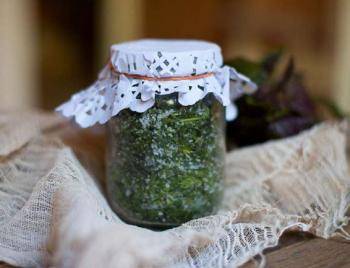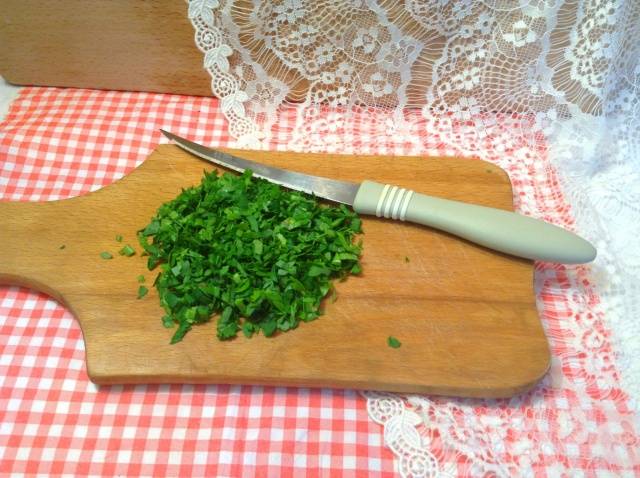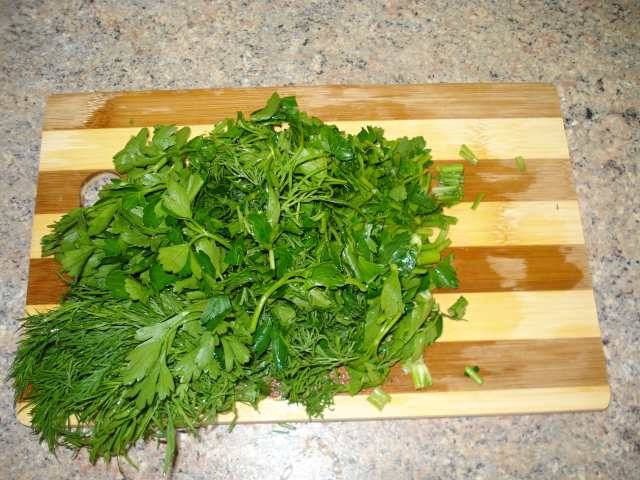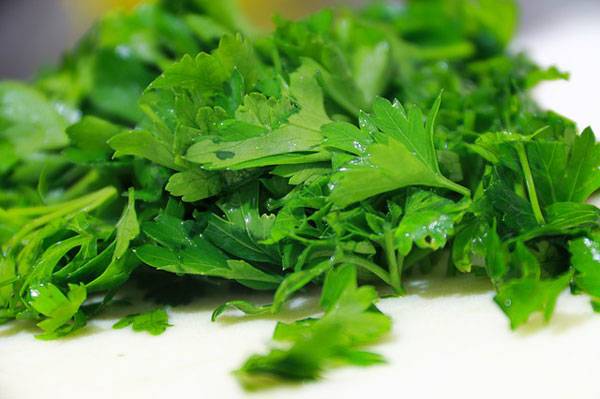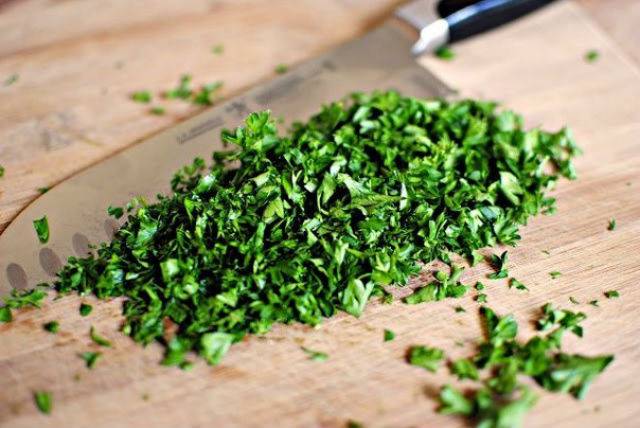Content
Thanks to technological progress, many now freeze greens and consider this method the most convenient. However, some are not going to abandon the old proven methods and still salt parsley and other herbs according to grandmother's recipes. Below you can see some of the options for pickling parsley for the winter. A properly prepared blank will stand for a long time and complement any dishes well.
How to salt parsley correctly
Jars of any size are suitable for storing spices. But it is most convenient to use small containers in order to quickly use an open jar. Thus, the seasoning will not have time to deteriorate. Immediately after opening, air enters the jar, so it will not be possible to store an open container for a long time.
The amount of salted parsley is determined by the hostess herself. The main thing is to take into account certain proportions. In no case should they be violated, since because of this, the workpiece may not be salted and will quickly deteriorate. In the classic recipe, fresh herbs should be 5 times more than salt. The largest salt is chosen for such blanks. Because of the fine salt, the seasoning may not be salted. It will be very disappointing if the wrong salt is the reason why the greens go bad.
The classic way of salting
For salting parsley, we need the following ingredients:
- a kilogram of parsley;
- 0.2 kg of coarse kitchen salt.
Next, they begin to prepare the workpiece itself. The parsley is thoroughly washed and sorted. All damaged and limp leaves must be removed. Then all suitable twigs are dried on a paper or waffle towel.
After that, all the leaves are cut and rubbed with prepared salt. The pulp is slightly crumpled with your hands. The main thing is that the salt is evenly distributed over all the pieces. It's time to fill the jars with seasoning. The pulp is poured into containers and lightly tamped. You don't need to fill the jar completely. A little space should be left on top, which in the future will be filled with the selected juice. For seaming, ordinary nylon caps are used. They tightly close the jars and send them for storage in a cold place.
Salting parsley with twigs
For this recipe, we need to select only soft young sprigs from parsley. Rough stems will not work for this. You do not need to cut the components, they will be harvested as a whole. In this case, the branches should not be too long and lush. Such branches are divided into smaller ones. Salt crystals should be well distributed between them. Some housewives prefer to sterilize jars for this workpiece, while others simply pour boiling water over the containers. In principle, too thorough heat treatment is unnecessary, because the seals will be stored in a cold room. Therefore, you can simply wash the jars using special products, and then scald with boiled water.
There are 2 options for how salted parsley is prepared. It is more convenient for some housewives to mix twigs with salt in a large container and only then sprinkle the greens in the jars. Others first fill the jars with twigs, and then pour them into each salt and mix thoroughly. The main thing is that the grains of salt can be evenly distributed.If you are uncomfortable doing this in a jar, use a large bowl instead.
Then the jars are closed with plastic lids and the blanks are placed in a cellar or other cold place. This roll will not only add a fragrant smell and taste to the dishes, but also serve as an excellent table decoration. Many housewives make 2 options for harvesting. They use chopped parsley for cooking, and salted twigs for decoration.
Salted parsley with dill
As you know, parsley is often used together with dill. We offer a variant of tasty preparation of such greens. Everyone can decide for himself how much parsley and dill to put. It is permissible that some ingredient prevails. Do not forget that the main thing is the correct proportions. For 1 kg of greens, there is at least 200 grams of salt.
So, let's describe a recipe in which there will be an equal amount of ingredients. We need:
- half a kilogram of dill;
- half a kilo of parsley;
- 200 grams of coarse kitchen salt.
Prepared and sorted out greens are thrown into a colander and washed under cold running water. The procedure can be repeated several times. Further, the leaves are dried on paper towels or napkins. Now you can cut the leaves in any way convenient for you. In this case, it does not matter at all how large or small the greens are.
Put all the parsley and dill in a large bowl or saucepan, then add salt there and mix the workpiece thoroughly with your hands. Jars and lids for greenery are washed and, if desired, sterilized. Next, you need to leave the jars so that they dry completely. Only then can you begin to distribute the mass over the containers.
Experienced housewives know another secret that can extend the shelf life of the workpiece. Sprinkle some more kitchen salt on top of the greens. This will prevent mold from forming and will keep the seaming fresh longer. Then the cans are closed with clean lids and sent for storage to a suitable place.
Salt parsley with celery for the winter
In addition, you can prepare an interesting preparation with celery. For this, all ingredients are taken in equal amounts (250 grams). We need the celery itself, parsley, dill and salt. We measure the required amount of ingredients on a scale so that we get 750 grams of herbs and 250 grams of salt.
We prepare the components as in the previous recipes. They must be rinsed and any thick stems and damaged branches removed. After that, they are cut into large pieces (about 2 cm). The celery is washed and cut into pieces of the same length. Agree, this seaming has a very attractive appearance. First, all the greens are mixed, and then salt is added and the workpiece is thoroughly mixed again. The seasoning is placed in clean and dry jars, tamped well and left for a couple of hours for the workpiece to settle and let the juice out. If necessary, add a little more greenery to the jars. Then the containers are closed with lids and left in a cold place.
Conclusion
Salted parsley for the winter is undeservedly "a thing of the past." This is a great way to preserve the taste and fresh aroma of greens for a long time for the whole winter. To prepare such a twist, you just need to mix the herbs with salt and roll the mass into the jars. Anyone can cope with such a task. When adding salted greens to cooked foods, you need to be very careful not to add them to an already salty soup or other dish.

